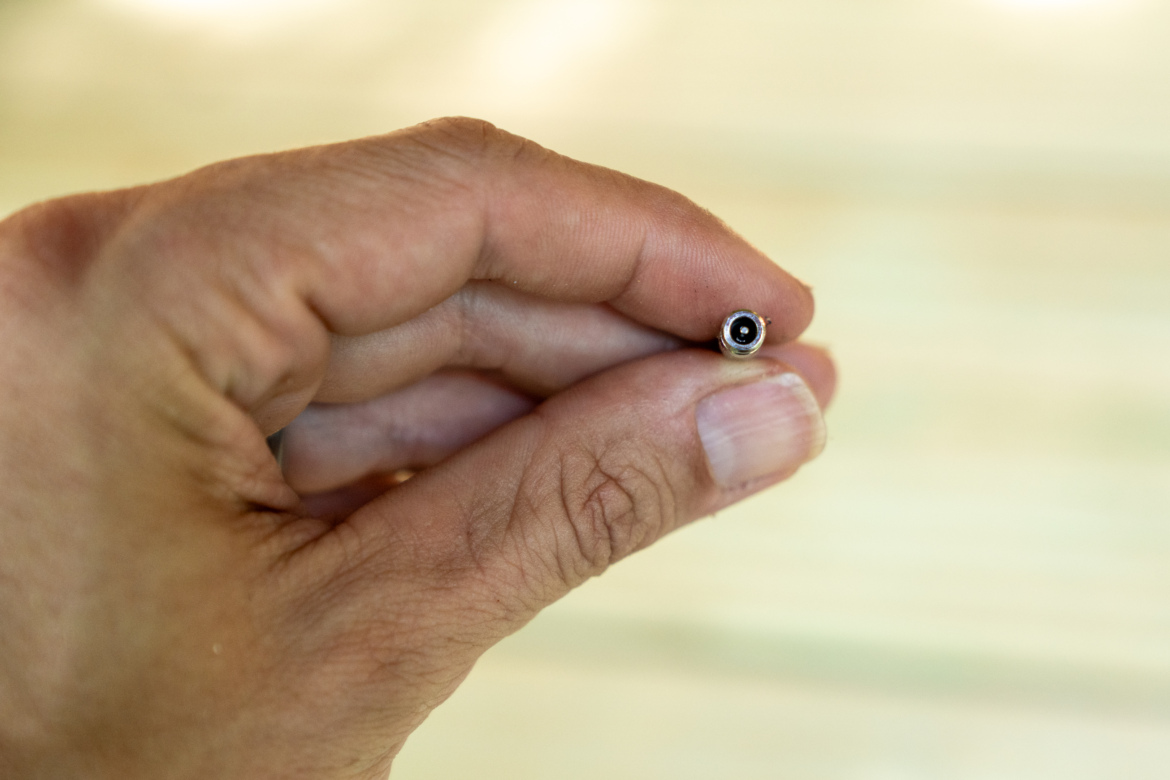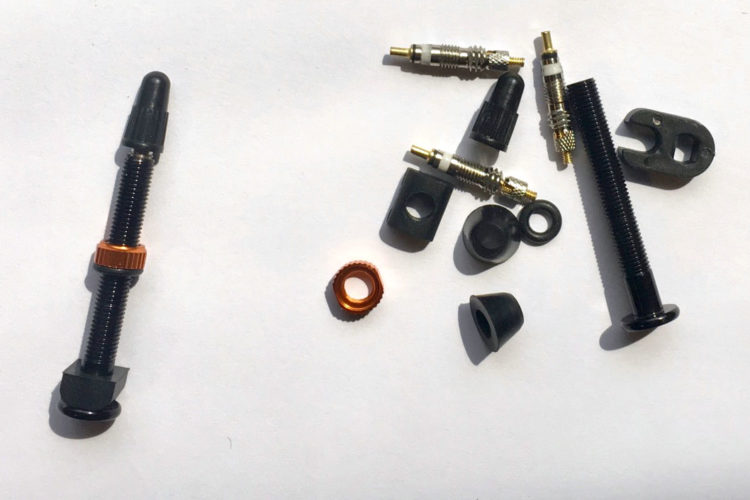
Back in April we told you the ‘Presta killers’ are coming for your tubeless tires, and highlighted two new valves from Stans and Muc-off. Well, today we can finally tell you about a third valve that hopes to put Presta on notice, and while Clik Valve definitely has some advantages over the existing standard, it has its own drawbacks too.
Clik Valve is not just a new type of tire valve; it’s a two-part system with a special valve and inflation head designed to mate together. There’s a lot to unpack here so I’ll talk about the valve and inflation head separately.

Clik Valve
The Clik Valve basically looks like a tiny Shrader that’s about the diameter of a Presta valve. Unlike a Presta valve, the pin is recessed, so there’s no need to unscrew anything to add air to your tire, and it’s less likely to get bent or worn out over time. It even works with existing Presta pump heads.
Not only that, I found that the Clik Valve core uses the same standard as existing Presta valve cores. So if you have a favorite set of Presta valve stems you’re already using, you can just swap in a Clik Valve core.
There’s a knurled surface on the core that promises tool-free removal. This works fine unless the core is over-tightened or stuck with sealant, in which case a valve core removal tool is helpful. I have a couple removers in my tool box and found that only one of them actually fit the tool flats properly, and none slip over the top.


The Clik Valve stem is pretty similar to others I’ve used over the years. One nice feature is that the base has holes in the sides, so it plays nicely with tire inserts. Overall, the Clik Valve stem has good flow, though not noticeably more or better than a standard Presta using a standard pump head.
Because you don’t need to unscrew anything to add air, Clik Valve is faster to use than a standard Presta valve: just pop on a pump and start inflating. The flip side is that it’s trickier to bleed pressure because the pin is recessed. On a recent trail ride I needed to find a twig to let some air out of my tires. (A 2.5mm hex is actually the perfect size.)

Clik Valve pump head
The other half of the Clik Valve equation is the proprietary pump head that’s designed to snap onto the valve. It’s a cool system and has a nice, satisfying click. There’s no lever to flip like on most traditional pump heads, and the seal is tight.
But since a traditional Presta pump head mates with the Clik Valve too, it doesn’t seem worth the effort or expense to swap out my pump head for a Clik. The brand sells a pump head designed to fit existing pumps, but I found none of my pumps would fit the head right out of the box. In this case, Clik says you can cut your pump hose (!) but clearly, that’s a point of no return. And unfortunately, the Clik pump head doesn’t work with existing Presta valves.
This is where things might start to get confusing, since the Clik Valve works with Presta pump heads, but the Clik pump head doesn’t work with Presta valves. So, unless I want to swap the valves on all of my bikes, having a Clik head on my pump doesn’t make sense. Put another way, Clik Valve is backward compatible with existing pumps; the Clik inflator head is not backward compatible with existing Presta valves.
Since the valve and the pump head are designed to work closely together, Clik has worked hard to extend and license the design ahead of the launch so that eventually, maybe, we don’t have to worry about any of this. We’re told that Schwalbe will offer tubes with Clik valves on them, and there are Schrader valve and needle inflator adapters available, though there’s no word on a Presta valve adapter. Presumably, this is because Clik hopes to kill Presta off, once and for all.
Bottom line
The Clik Valve system improves on the Presta valve with a faster and more robust connection, but complicates things when it comes to bleeding pressure and choosing a pump head. For me, the more compelling option is to go half-in and adopt the Valve, but not the pump head. If and when Clik sells the cores separately, this could be an easy drop-in replacement for those of us with a garage full of tubeless Presta valves already installed.





















2 Comments
Jul 7, 2024
Jul 6, 2024